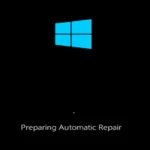Some loose and peeling paint can be removed with pressure washing, but it’s not a complete replacement for scraping. Painting the exterior of your home is a big job. Many homeowners wonder if they can skip scraping off peeling paint by using a pressure washer instead. This is a good question because scraping can be time-consuming.
Using a pressure washer alone is not enough to prep peeling paint before repainting. While it can remove some loose paint it won’t get rid of all of it. Scraping and sanding are still needed to properly prepare the surface.
A pressure washer can help clean the exterior walls. But it’s just one step in the process. Proper prep work is key for a long-lasting paint job. This includes removing peeling paint scraping sanding and cleaning. Skipping these steps can lead to problems down the road.
- Effectiveness: Pressure washing is best at removing already loose paint. It may not remove all the paint that is poorly adhered but not yet peeling.
- Surface Damage: High-pressure water can damage the underlying surface, especially on wood or older materials.
- Preparation: Even if pressure washing removes a significant amount of loose paint, you’ll likely still need to scrape some areas to ensure a smooth and properly prepared surface for new paint.
What to Consider:
- Extent of Peeling: If only a small amount of paint is peeling, pressure washing might be sufficient.
- Type of Surface: Certain surfaces, like wood, are more susceptible to damage from pressure washing.
- Experience: If you’re not experienced with pressure washers, it’s best to hire a professional to avoid damaging your home.
Recommendation:
The best approach is often a combination of pressure washing and scraping. Pressure washing can quickly remove loose paint, while scraping ensures a thorough preparation of the surface.
If you’re unsure about the best way to proceed, consult with a professional painter or pressure washing service. They can assess your specific situation and recommend the most effective and safe way to prepare your home’s exterior for painting.
Image Credit: https://www.flickr.com/photos/99175982@N00/4751796430
Preparation and Assessment
Getting ready to paint your home’s exterior takes some careful planning. You need to check how bad the peeling is and decide if scraping is needed. This helps make sure the new paint will stick well.
Identifying Extent of Peeling
Start by looking closely at your home’s exterior. Walk around and check all sides. Look for areas where paint is coming off. Use a putty knife to test loose spots. Gently push the edge under peeling paint. If it lifts easily, that area needs work.
Make a list of problem areas. Note how much of the surface is peeling. This helps plan the work ahead. Check for cracks too. They might need filling before painting.
Evaluating the Need for Scraping
After finding peeling spots, decide if scraping is needed. Small areas of peeling might only need light sanding. But bigger patches often require more work.
Try this quick test:
- Wet a small area with water
- Wait 10 minutes
- Check if more paint peels off
If more paint comes off, you likely need to scrape. Scraping removes loose paint that pressure washing might miss. It helps the new paint stick better.
For old homes, test for lead paint first. If found, special safety steps are needed.
Painting and Finishing
Good prep work sets the stage for a great paint job. The right primers and paints protect your home’s exterior for years to come.
Using Primers and Sealants
Primer is key for a long-lasting paint job. It helps paint stick better and last longer. Use a primer made for exterior surfaces. Apply it to bare wood or peeling areas.
For badly peeling spots, try a product like Peel Bond. It’s thick and fills in gaps. Let the primer dry fully before painting. This can take 24 hours or more.
Some paints have primer mixed in. These work well on surfaces in good shape. But for problem areas, a separate primer is best.
Application of New Paint
Choose a high-quality exterior latex paint. It lasts longer than cheaper paints. Pick a color that fits your home and neighborhood.
Check the weather before you start. Avoid painting when it’s too hot, cold, or damp. The best temps are 50-85°F. Don’t paint if rain is coming in the next 24 hours.
Use a roller for large areas. A brush works well for edges and details. Apply thin, even coats. Let each coat dry before adding another.
Most homes need two coats of paint. This gives the best coverage and protection. The whole job can take several days to finish.
Frequently Asked Questions
Preparing a house exterior for painting involves several key steps. These include scraping, pressure washing, and allowing proper drying time. Safety and proper techniques are crucial for the best results.
Is it necessary to scrape off all peeling paint before repainting the exterior of a home?
Yes, it’s important to scrape off peeling paint before repainting. This helps the new paint stick better. It also makes the final look smoother.
Scraping ensures a clean surface for painting. It removes loose bits that could fall off later. This step is key for a long-lasting paint job.
Can pressure washing effectively remove old paint from the exterior surfaces of a house?
Pressure washing can help remove some loose paint. But it’s not a full substitute for scraping. It works best as part of the cleaning process.
This method is good for washing away dirt and grime. It can also loosen some peeling paint. But it won’t remove all problem areas by itself.
What precautions should be taken when using a pressure washer to avoid removing paint from surfaces unintentionally?
Use the right pressure setting. Too much force can damage the surface. Start with a lower pressure and test in a small area first.
Hold the nozzle at the correct angle. This helps avoid lifting good paint. Keep the washer moving to prevent damage in one spot.
How long should one wait after pressure washing a house before starting the painting process?
Wait at least 24 hours after pressure washing. This allows the surface to dry fully. Painting on a wet surface can lead to problems later.
The exact time depends on weather conditions. Warm, dry days speed up drying. Cool or humid weather may need more time.
What are the recommended PSI levels for a pressure washer to remove paint from wood surfaces without causing damage?
For wood surfaces, use 500 to 800 PSI. This range is usually safe for removing loose paint without harm. Always test a small area first.
Higher PSI can gouge or splinter wood. Lower pressure might not be effective. Adjust based on the wood type and paint condition.
What methods are advisable for preparing a painted metal surface for repainting, including the use of pressure washers?
For metal surfaces, start with a thorough cleaning. Use a pressure washer at 1500 to 2000 PSI to remove dirt and loose paint.
After washing, let the surface dry. Then sand any rough spots. This creates a good base for new paint to stick to.







